#cognitive science
Text
Cognitive Techniques To Change Your Thoughts ✨✨
Cognitive techniques are strategies used in cognitive therapy to help you identify and change negative thoughts and beliefs. These techniques should be practiced regularly so that they become habits.
Cognitive Restructuring: This involves identifying and challenging negative or irrational thoughts and replacing them with more positive or rational beliefs.
Thought Stopping: When you notice a negative thought entering your mind, you can mentally shout "Stop!" This interrupts the thought process and gives you a chance to replace the negative thought with a positive one.
Mindfulness and Meditation: These practices help you become more aware of your thoughts and feelings in the present moment. When you observe your thoughts without judgment, you gain insight into negative patterns and choose to let them go.
Journaling: Writing down your thoughts can help you process and analyze them. With time you can identify patterns and work on changing negative thought cycles.
Positive Affirmations: Repeating positive statements can help counteract negative self talk and reinforce positive beliefs about yourself.
Evidence Collection: When faced with a negative belief, ask yourself, "What evidence do I have that supports or refutes this thought?" This can help you see things in a more balanced way.
Decatastrophizing: If you tend to imagine the worst scenario, ask yourself how likely it is to happen and what other possible outcomes there might be. This can help you view situations more realistically.
Labeling: Instead of saying "I am a failure," label the thought as "a negative thought about my abilities."
Distraction: Engaging in an activity or hobby can divert your attention from negative thoughts and give your mind a break.
Scheduling Worry Time: Instead of ruminating on worries throughout the day, set aside a specific time to process them. This can prevent constant worry and allow you to focus on other tasks.
Challenging Cognitive Distortions: Recognize and challenge cognitive distortions like black-and-white thinking, overgeneralization, and personalization.
Visual Imagery: Visualize a place or situation where you feel calm and happy. This can help shift your focus from negative thoughts.
These are very simple descriptions and examples of cognitive techniques. I listed the ones we can put into practice on our own. There are more in depth methods and practices used by doctors on different fields of study and practice. I can list, as well as add upon the information listed here.
#cognitive science#cognitive behavioral therapy#psychology#personal improvement#personal development#personal growth#self help#self improvement#self care#limiting beliefs#positive mindset#affirmations
4K notes
·
View notes
Text
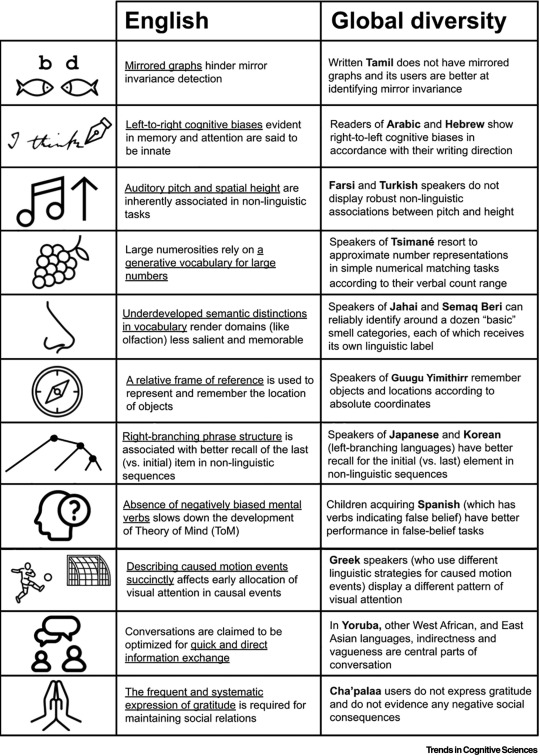
21K notes
·
View notes
Text
why neuroscience is cool
space & the brain are like the two final frontiers
we know just enough to know we know nothing
there are radically new theories all. the. time. and even just in my research assistant work i've been able to meet with, talk to, and work with the people making them
it's such a philosophical science
potential to do a lot of good in fighting neurological diseases
things like BCI (brain computer interface) and OI (organoid intelligence) are soooooo new and anyone's game - motivation to study hard and be successful so i can take back my field from elon musk
machine learning is going to rapidly increase neuroscience progress i promise you. we get so caught up in AI stealing jobs but yes please steal my job of manually analyzing fMRI scans please i would much prefer to work on the science PLUS computational simulations will soon >>> animal testing to make all drug testing safer and more ethical !! we love ethical AI <3
collab with...everyone under the sun - psychologists, philosophers, ethicists, physicists, molecular biologists, chemists, drug development, machine learning, traditional computing, business, history, education, literally try to name a field we don't work with
it's the brain eeeeee
#my motivation to study so i can be a cool neuroscientist#science#women in stem#academia#stem#stemblr#studyblr#neuroscience#stem romanticism#brain#psychology#machine learning#AI#brain computer interface#organoid intelligence#motivation#positivity#science positivity#cogsci#cognitive science
972 notes
·
View notes
Text
I have a certain amount of admiration for cognitive scientists who are prepared to cut the Gordian knot of defining what a mind is and simply deny the validity of their own subjective experience. I mean, obviously someone who looks you in the eye and says "I'm not actually conscious, I just behave as though I am" is full of shit, but you've gotta respect the audacity.
2K notes
·
View notes
Text
Many people suggest that they realized their life's passion at a young age. Recently, I began to wonder what it was that I was passionate about as a child. There was no occupation that I could remember exciting me into a state of focused intention. As a child, I did not fantasize about becoming any one occupation. My only long term goal was to become absolutely reasonable.
At a young age I was prone to recognizing the seemingly infinitely contradictive nature of people's biases. It drove me to reject all forms of authority. My brain would formulate intricate arguments against the ideologies of others, no matter their stance. It took some time and experience to realize that EVERY ideology has inherent faults. Upon this recognition, I would refrain from going against the biases and ideologies of others and instead, accept them as parts of a grand picture. We do not contain the inherent ability to recognize that every single one of our assumptions contain faults due to their individualized definition that separates them from all other things. Each ideology does not take into account all others by default. I take all ideologies into consideration, recognizing their relative value as well as their inherently faulty nature. Through this, I can be absolutely reasonable, as long as I am mindful of my own conditioned human responses and affinity toward ideological assumptions.
#books#philosophy#insights#social commentary#cognitive science#ideology#sociology#society#rationalism#reasoning#argument#human nature
64 notes
·
View notes
Text
Sudden abrupt changes in your life/environment can cause your perspective of reality to become distorted. You’re grieving your old self/life, and your old self is fighting back. You can get over that by talking to your old self, explaining that they’re not dying/going away forever, that you still need and cherish them. You just need them to calm down and be patient for a while while you figure out how to frame your new life change in a positive light for every part of your mind. Do that enough and you’ll have access to every part of your mind/brain at the same time. Your brain will rewire itself and you’ll be able to create new connections from grey matter instantly. It’ll work more like a quantum computer than anything else.
#psychology#psychoanalysis#Carl Jung#grief#behavioral science#cognitive science#neurology#neuroscience#therapy#perspective#framing
68 notes
·
View notes
Text
Interesting Reviews for Week 4, 2024
Cognition from the Body-Brain Partnership: Exaptation of Memory. Buzsáki, G., & Tingley, D. (2023). Annual Review of Neuroscience, 46(1), 191–210.
Prefrontal Cortical Control of Anxiety: Recent Advances. Mack, N. R., Deng, S., Yang, S.-S., Shu, Y., & Gao, W.-J. (2023). The Neuroscientist, 29(4), 488–505.
Neural Circuits for Emotion. Malezieux, M., Klein, A. S., & Gogolla, N. (2023). Annual Review of Neuroscience, 46(1), 211–231.
Recent Insights on Glutamatergic Dysfunction in Alzheimer’s Disease and Therapeutic Implications. Pinky, P. D., Pfitzer, J. C., Senfeld, J., Hong, H., Bhattacharya, S., Suppiramaniam, V., … Reed, M. N. (2023). The Neuroscientist, 29(4), 461–471.
#neuroscience#science#research#brain science#scientific publications#cognitive science#reviews#neurobiology#cognition#psychophysics#computational neuroscience
35 notes
·
View notes
Text
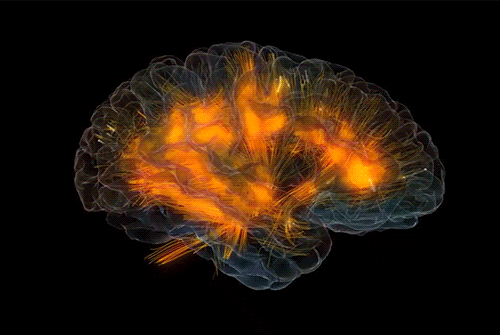
Is the Brain a Driver or a Steering Wheel?
This three part series summarizes what science knows, or thinks it knows, about consciousness. In Part 1 What Does Quantum Physics Imply About Consciousness? we looked at why several giants in quantum physics - Schrodinger, Heisenberg, Von Neumann and others - believed consciousness is fundamental to reality. In Part 2 Where Does Consciousness Come From? we learned the "dirty little secret" of neuroscience: it still hasn't got a clue how electrical activity in the brain results in consciousness.
In this concluding part of the series we will look at how a person can have a vivid conscious experience even when their brain is highly dysfunctional. These medically documented oddities challenge the materialist view that the brain produces consciousness.
Before proceeding, let's be clear what what is meant by "consciousness". For brevity, we'll keep things simple. One way of looking at consciousness is from the perspective of an outside observer (e.g., "conscious organisms use their senses to notice differences in their environment and act on their goals.") This outside-looking-in view is called behavioral consciousness (aka psychological consciousness). The other way of looking at it is the familiar first-person perspective of what it feels like to exist; this inside-looking-out view is called phenomenal consciousness (Barušs, 2023). This series is only discussing phenomenal consciousness.
Ready? Let’s go!

Source: Caltech Brain Imaging Center
A Hole in the Head
Epilepsy is a terrible disease in which electrical storms in the brain trigger seizures. For some people these seizures are so prolonged and frequent that drastic action is needed to save their lives. One such procedure is called a hemispherectomy, the removal or disconnection of half the brain. Above is an MRI image of a child who has undergone the procedure.
You might think that such radical surgery would profoundly alter the memory, personality, and cognitive abilities of the patient.
You would be wrong. One child who underwent the procedure at age 5 went on to attend college and graduate school, demonstrating above average intelligence and language abilities despite removal of the left hemisphere (the zone of the brain typically identified with language.) A study of 58 children from 1968 to 1996 found no significant long-term effects on memory, personality or humor, and minimal changes in cognitive function after hemispherectomy.
You might think that, at best, only a child could successfully undergo this procedure. Surely such surgery would kill an adult?
You would be wrong again. Consider the case of Ahad Israfil, an adult who suffered an accidental gunshot to the head and successfully underwent the procedure to remove his right cerebral hemisphere. Amazingly, after the five hour operation he tried to speak and went on to regain a large measure of functionality (although he did require use of a wheelchair afterwards.)
Another radical epilepsy procedure, a corpus collosotomy, leaves the hemispheres intact but severs the connections between them. For decades it was believed that these split-brain patients developed divided consciousness, but more recent research disputes this notion. Researchers found that, despite physically blocking all neuronal communication between the two hemispheres, the brain somehow still maintains a single unified consciousness. How it manages this feat remains a complete mystery. Recent research on how psychedelic drugs affect the brain hints that the brain might have methods other than biochemical agents for internal communication, although as yet we haven't an inkling as to what those might be.
So what's the smallest scrape of brain you need to live? Consider the case of a 44-year-old white collar worker, married with two children and with an IQ of 75. Two weeks after noticing some mild weakness in one leg the man went to see his doctor. The doc ordered a routine MRI scan of the man's cranium, and this is what it showed.
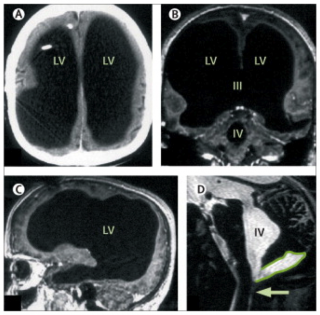
Source: The Lancet
What you are seeing here is a giant empty cavity where most of the patient's brain should be. Fully three quarters of his brain volume is missing, most likely due to a bout of hydrocephalus he experienced when he was six months old.

Last Words
Many unusual phenomena have been observed as life draws to an end. We're going to look at two deathbed anomalies that have neurological implications.
The first is terminal lucidity, sometimes called paradoxical lucidity. First studied in 2009, terminal lucidity refers to the spontaneous return of lucid communication in patients who were no longer thought to be medically capable of normal verbal communication due to irreversible neurological deterioration (e.g., Alzheimers, meningitis, Parkinson's, strokes.) Here are three examples:
A 78-year-old woman, left severely disabled and unable to speak by a stroke, spoke coherently for the first time in two years by asking her daughter and caregiver to take her home. She died later that evening.
A 92-year-old woman with advanced Alzheimer’s disease hadn’t recognized her family for years, but the day before her death, she had a pleasantly bright conversation with them, recalling everyone’s name. She was even aware of her own age and where she’d been living all this time.
A young man suffering from AIDS-related dementia and blinded by the disease who regained both his lucidity and apparently his eyesight as well to say farewell to his boyfriend and caregiver the day before his death.
Terminal lucidity has been reported for centuries. A historical review found 83 case reports spanning the past 250 years. It was much more commonly reported in the 19th Century (as a sign that death was near, not as a phenomenon in its own right) before the materialist bias in the medical profession caused a chilling effect during the 20th Century. Only during the past 15 years has any systematic effort been made to study this medical anomaly. As a data point on its possible prevalence a survey of 45 Canadian palliative caregivers found that 33% of them had witnessed at least one case of terminal lucidity within the past year. Other surveys found have that the rate of prevalence is higher if measured over a longer time window than one year, suggesting that, while uncommon, terminal lucidity isn't particularly rare.
Terminal lucidity is difficult to study, in part because of ethical challenges in obtaining consent from neurocompromised individuals, and in part because its recent identification as a research topic presents delineation problems. However, the promise of identifying new neurological pathways in the brains of Alzheimer's and Parkinson's patients has gotten a lot of attention. In 2018 the US National Institute on Aging (NIA) announced two funding opportunites to advance this nascent science.
Due to the newness of this topic there will continue be challenges with the data for some time to come. However, its impact on eyewitnesses is indisputably profound.
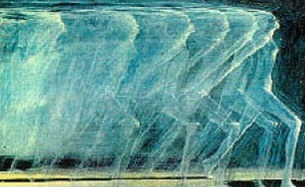
Near Death Experiences
The second deathbed anomaly we will take a look at are Near-Death Experiences (NDEs.) These are extraordinary and deeply personal psychological experiences that typically (but not always) occur during life-threatening emergencies such as cardiac arrest, falls, automobile accidents, or other traumatic events; they are also occasionally reported during general anesthesia. Much of the research in this area has focused on cardiac arrest cases because these patients are unconscious and have little to no EEG brain wave activity, making it difficult to account for how the brain could sustain the electrical activity needed to perceive and remember the NDE. This makes NDEs an important edge case for consciousness science.
NDEs are surprisingly common. A 2011 study published by the New York Academy of Sciences estimated that over 9 million people in the United States have experienced an NDE. Multiple studies have found that around 17% of cardiac arrest survivors report an NDE.
There is a remarkable consistency across NDE cases, with experiencers typically reporting one or more of the following:
The sensation of floating above their bodies watching resuscitation efforts, sometimes able to recall details of medical procedures and ER/hallway conversations they should not have been aware of;
Heightened sensations, occasionally including the ability of blind and deaf people to see and hear;
Extremely rapid mental processing;
The perception of passing through something like a tunnel;
A hyper-vivid life review, described by many experiencers as "more real than real";
Transcendent visions of an afterlife;
Encounters with deceased loved ones, sometimes including people the experiencer didn’t know were dead; and
Encounters with spiritual entities, sometimes in contradiction to their personal belief systems.
Of particular interest is a type of NDE called a veridical NDE. These are NDEs in which the experiencer describes events that occurred during the period when they had minimal or no brain activity and should not have been perceived or remembered if the brain were the source of phenomenal consciousness. These represent about 48% of all NDE accounts (Greyson 2010). Here are a few first-hand NDE reports.
A 62-year-old aircraft mechanic during a cardiac arrest (from Sabom 1982, pp. 35, 37)
A 23-year-old crash-rescue firefighter in the USAF caught by a powerful explosion from a crashed B-52 (from Greyson 2021, pg. 27-29)
An 18-year-old boy describes what it was like to nearly drown (from the IANDS website)
There are thousands more first person NDE accounts published by the International Association for Near-Death Studies and at the NDE Research Foundation. The reason so many NDE accounts exist is because the experience is so profound that survivors often feel compelled to write as a coping method. Multiple studies have found that NDEs are more often than not life-changing events.
A full discussion of NDEs is beyond the scope of this post. For a good general introduction, I highly recommend After: What Near-Death Experiences Reveal about Life and Beyond by Bruce Greyson, MD (2021).

The Materialist Response
Materialists have offered up a number of psychological and physiological models for NDEs, but none of them fits all the data. These include:
People's overactive imaginations. Sabom (1982) was a skeptical cardiologist who set out to prove this hypothesis by asking cardiac arrest survivors who did not experience NDEs to imagine how the resuscitation process worked, then comparing those accounts with the veridical NDE accounts. He found that the veridical NDE accounts were highly accurate (0% errors), whereas 87% of the imagined resuscitation procedures contained at least one major error. Sabom became convinced that NDEs are real. His findings were replicated by Holden and Joesten (1990) and Sartori (2008) who reviewed veridical NDE accounts in hospital settings (n = 93) and found them to be 92% completely accurate, 6% partially accurate, and 1% completely inaccurate.
NDEs are just hallucinations or seizures. The problem here is that hallucinations and seizures are phenomena with well-defined clinical features that do not match those of NDEs. Hallucinations are not accurate descriptions of verifiable events, but veridical NDEs are.
NDEs are the result of electrical activity in the dying brain. The EEGs of experiencers in cardiac arrest show that no well-defined electrical activity was occurring that could have supported the formation or retention of memories during the NDE. These people were unconscious and should not have remembered anything.
NDEs are the product of dream-like or REM activity. Problem: many NDEs occur under general anesthesia, which suppresses dreams and REM activity. So this explanation cannot be correct.
NDEs result from decreased oxygen levels in the brain. Two problems here: 1) The medical effects of oxygen deprivation are well known, and they do not match the clinical presentation of NDEs. 2) The oxygen levels of people in NDEs (e.g., during general anesthesia) has been shown to be the same or greater than people who didn’t experience NDEs.
NDEs are the side effects of medications or chemicals produced in the brain (e.g. ketamine or DMT). The problem here is that people who are given medications in hospital settings tend to report fewer NDEs, not more; and drugs like ketamine have known effects that are not observed in NDEs. The leading advocate for the ketamine model conceded after years of research that ketamine does not produce NDEs (Corraza and Schifano, 2010).

Summing Up
In coming to the end of this series, let's sum up what we discussed.
Consciousness might be wired into the physical universe at fundamental level, as an integral part of quantum mechanics. Certainly several leading figures in physics thought so - Schrodinger, Heisenberg, Von Neumann, and more recently Nobel Laureate Roger Penrose and Henry Stapp.
Materialist propaganda notwithstanding, neuroscience is no closer to identifying Neural Correlates of Consciousness (NCCs) than it was when it started. The source of consciousness remains one of the greatest mysteries in science.
Meanwhile, medical evidence continues to pile up that there is something deeply amiss with the materialist belief that consciousness is produced by the brain. In a sense, the challenge that NDEs and Terminal Lucidity pose to consciousness science is analogous to the challenge that Dark Matter poses to physics, in that they suggest that the mind-brain identity model of classic materialist psychology may need to be rethought to adequately explain these phenomena.
Ever since the Greeks, science has sought to explain nature entirely in physical terms, without invoking theism. It has been spectacularly successful - particularly in the physical sciences - but at the cost of excluding consciousness along with the gods (Nagel, 2012). What I have tried to do in this series is to show that a very credible argument can be made that materialism has the arrow of causality backwards: the brain is not the driver of consciousness, it's the steering wheel.
I don't think we are yet ready to say what consciousness is. Much more research is needed. I'm not making the case for panpsychism, for instance - but I do think consciousness researchers need to throw off the assumption drag of materialism before they're going to make any real progress.
It will be up to you, the scientists of tomorrow, to make those discoveries. That's why I'm posting this to Tumblr rather than an academic journal; young people need to hear what's being discovered, and the opportunities that these discoveries represent for up and coming scientists.
Never has Planck's Principle been more apt: science advances one funeral at a time.
Good luck.
For Further Reading
Barušs, Imants & Mossbridge, Julia (2017). Transcendent Mind: Rethinking the Science of Consciousness. American Psychological Association, Washington DC.
Barušs, Imants (2023). Death as an Altered State of Consciousness: A Scientific Approach. American Psychological Association, Washington DC.
Batthyány, Alexander (2023). Threshold: Terminal Lucidity and the Border of Life and Death. St. Martin's Essentials, New York.
Becker, Carl B. (1993). Paranormal Experience and Survival of Death. State University of New York Press, Albany NY.
Greyson, Bruce (2021). After: A Doctor Explores What Near-Death Experiences Reveal about Life and Beyond. St. Martin's Essentials, New York.
Kelly, Edward F.; Kelly, Emily Williams; Crabtree, Adam; Gauld, Alan; Grosso, Michael; & Greyson, Bruce (2007). Irreducible Mind: Toward a Psychology for the 21st Century. Rowman & Littlefield, New York.
Moody, Raymond (1975). Life After Life. Bantam/Mockingbird, Covington GA.
Moreira-Almeida, Alexander; de Abreu Costa, Marianna; & Coelho, Humberto S. (2022). Science of Life After Death. Springer Briefs in Psychology, Cham Switzerland.
Penfield, Wilder (1975). Mystery of the Mind: A Critical Study of Consciousness and the Human Brain. Princeton Legacy Library, Princeton NJ.
Sabom, Michael (1982). Recollections of Death: A Medical Investigation. Harper and Row Publishers, New York.
van Lommel, Pim (2010). Consciousness Beyond Life: The Science of the Near-Death Experience. HarperCollins, New York.
#consciousness#cognitive science#near death experiences#nde#terminal lucidity#terminal illness#cognitive neuroscience#paradoxical lucidity#hemispherectomy#corpus collosotomy#psychadelic#psychonaut#psychonauts#psilocybin#lsd#ketamine#materialism and its discontents#neurology#neuropsychology#philosophy of mind#brain#quantum physics#consciousness series
51 notes
·
View notes
Text
Evolution of the sciences throughout history
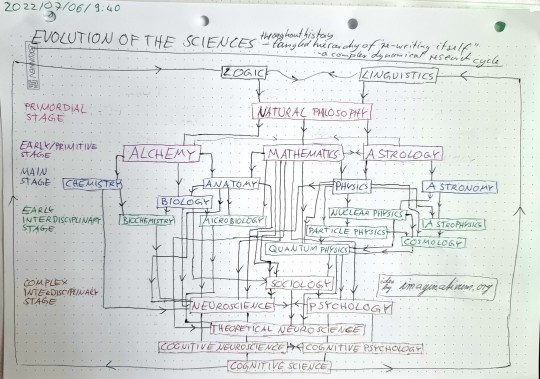
Yesterday I could finally scribble a rough framework of an observation and concept I had regarding the sciences, and how they emerged from some ancient mysticism pseudoscience stuff, such as astrology and alchemy.
I considered 5 stages:
Primordial stage: Natural philosophy
Early/primitive stage: Alchemy, Math(could also be between primordial and early stage), Astrology
Main stage: Chemistry, Anatomy and Biology, Physics, Astronomy
Early interdisciplinary stage: Biochemistry, microbiology, astrophysics, nuclear and particle physics, cosmology, quantum physics
Complex interdisciplinary stage: Sociology, psychology, neuroscience, cognitive science
... then coming back to logic and linguistics and looping back to philosophy... and a new round begins... (What does this mean in concrete? That one is for another article as it would exceed the margin now. (But it has to to with dynamical iterative rendering processes, to summarize it.))
#from the backyard of my theoretical bullshittery factory#science#science history#math#mathematics#philosophy#physics#cognitive science#neuroscience#biology#chemistry#anatomy#astronomy#psychology#linguistics#logic#science philosophy#theoretical nonsense#theoretical bullshit
525 notes
·
View notes
Text



Roger Shepard – Scientist of the Day
Roger Shepard, a cognitive scientist, was born Jan. 30, 1929, in Palo Alto.
read more...
#Roger Shepard#cognitive science#illusons#histsci#histSTM#20th century#history of science#Ashworth#Scientist of the Day
23 notes
·
View notes
Text
Happy Halloween Half-Way!!!
Doc Heath here; your friendly Neighborhood NeuroMechanic!
Spooky season is a great time for the young AND the young at heart to PRACTICE “FEAR”. That’s right! Practicing experiencing difficult emotions when we know we’re in a safe environment can help us program our minds to understand emotions - even the difficult ones - are not harmful to us.
Go ahead and enter the creaky doors of that Haunted House. Watch that spooky movie and let the CHILLS run up and down your spine. Decorate your home and yard with ghosts and monsters and witches and zombies; later imagining them all coming to life in the dark of the night.
Guess what will happen when you experience that FEAR? N-O-T-H-I-N-G.
Fear can never harm you though it can be a difficult emotion.
Use this Half-Way to Halloween to create a space for fear that YOU control.
Feel the fear and THEN pay attention to your THINKING. After all, it is your THINKING that is CREATING the fear in the first place.
Change your thinking; change your feelings. Master your thinking; master your life.
TherapyBites Podcast NOW AVAILABLE on your favorite pod player!
It’s all about the Psychology of EveryDay Life & Relationships.
SIX BRAND NEW episodes:
E1. Bonus Intro Episode
E2. Scary Stories from the DARK RECESSES Beneath the Therapy Couch
E3. Spooky Tales, Scary Therapy, & Staying Psychologically Safe
E4. Barking Werewolf Ruins the Day
E5. Zombies & Depression Quicksand
E6. Spirits, Unsafe Spaces, & Other Tales of Terror
E7. Myths, Monsters, & Scary Stress
#therapybites#couchcrumbs#psychotherapy#relationships#neuroscience#docheath#bitesizedtherapy#cognitive science#neuropsychology#forensic psychology#podcast#therapistsoftiktok#therapistsofinstagram#best therapy#therapytok#therapymemes#marriagecoach#christian marriage#marriage counseling#success coach#success#mindsetcoach#halloween#spooktacular#spooky#scarey#get scared#frightfest#fright#zombie
322 notes
·
View notes
Text

As some of you might perhaps know: I have 4 clusters of interests:
Math (Blue)
PhysX (Green)
cogSci+ (includes cognitive science, psychology, neuroscience, linguistics -> furtherly slightly branching out towards literature and philosophy) (red-and red-adjacent)
Art, LIT(erature) & Philo(sophy)
For the cogSci+ cluster of interests I made that branching illustration/visualisation.
I wrote the words on the foil, not directly at the paper of the drawing.
#science#interests#neuroscience#cognitive science#linguistics#literature#psychology#visualisation#colorful#color sorting#branching#branches#branched#branch
25 notes
·
View notes
Text
Daniel Dennett (1942 - 2024)
Many of us today woke up to a world that felt a little less vibrant, a little less intellectually stimulating. Daniel Dennett, a philosopher who revolutionized our understanding of the mind, science, and consciousness, passed away yesterday.
Daniel Dennett, image taken from Wikipedia
For me, Dennett was a guiding light in his study field. His work, particularly his early books “Content and…
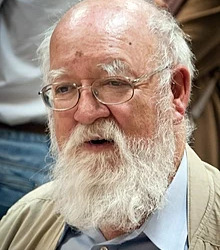
View On WordPress
#academia#Artificial Intelligence#biology#cognitive science#computationalism#consciousness#cultural commentator#Daniel Dennett#Darwin#free will#mental processes#Mind#multiple drafts model#naturalistic approach#nature of reality#philosopher#Philosophy#philosophy of mind#philosophy of science#Raffaello Palandri#science#wisdom
12 notes
·
View notes
Text

#science#women in stem#academia#stem#stemblr#space science#physics#astrophysics#astronomy#quantum mechanics#general relativity#cognitive science#psychology#neuroscience#cognitive neuroscience#philosophy of science#stem romanticism#stem memes#physics memes#science memes#neuroscience memes
196 notes
·
View notes
Text
I think the scientific test for object permanence in non-human animals should be seeing how badly you can freak them out with stage magic.
#science#zoology#cognitive science#animals#animal behaviour#stage magic#the highest tier is achieved if the animal accuses you of witchcraft
1K notes
·
View notes
Photo

The ‘Cognitive Science Hexagon’ redrawn from the original cover of the Sloan Foundation’s 1978 State of the Art Report on Cognitive Science
290 notes
·
View notes